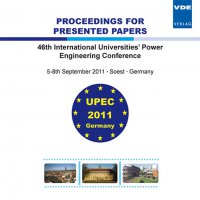Overview and Comparison of Leading Communication Standard Technologies for Smart Home Area Networks Enabling Energy Management Systems
Konferenz: UPEC 2011 - 46th International Universities' Power Engineering Conference
05.09.2011 - 08.09.2011 in Soest, Germany
Tagungsband: UPEC 2011
Seiten: 6Sprache: EnglischTyp: PDF
Persönliche VDE-Mitglieder erhalten auf diesen Artikel 10% Rabatt
Autoren:
Córdova, C.E.P. Jordán; Asare-Bediako, B.; Vanalme, G. M. A.; Kling, W. L. (Eindhoven University of Technology, Den Dolech 2, Eindhoven, the Netherlands)
Inhalt:
Communication standards support the Smart Grid vision, since its importance relies on reducing risk and increasing overall simplicity. Such standards improve interoperability and security. Both wired and wireless approaches have been developed and improved over the last years. This paper makes an overview of leading communication standard technologies applied in Smart Home Area Networks. Three of such technologies are compared namely, ZigBee, Low Power WiFi and HomePlug. Home Area Networks use wired/wireless Sensor and Actuator Networks to enable Energy Management Systems. They provide the communication infrastructure to measure, sense and to control different types of devices/loads deployed inside homes and buildings. Two main trends are observed: the convergence into hybrid system, integrating both wireless and wired technologies; and Internet Protocol-based solutions as one of the top requirements, enabling multiple applications and devices to run in the same network.


